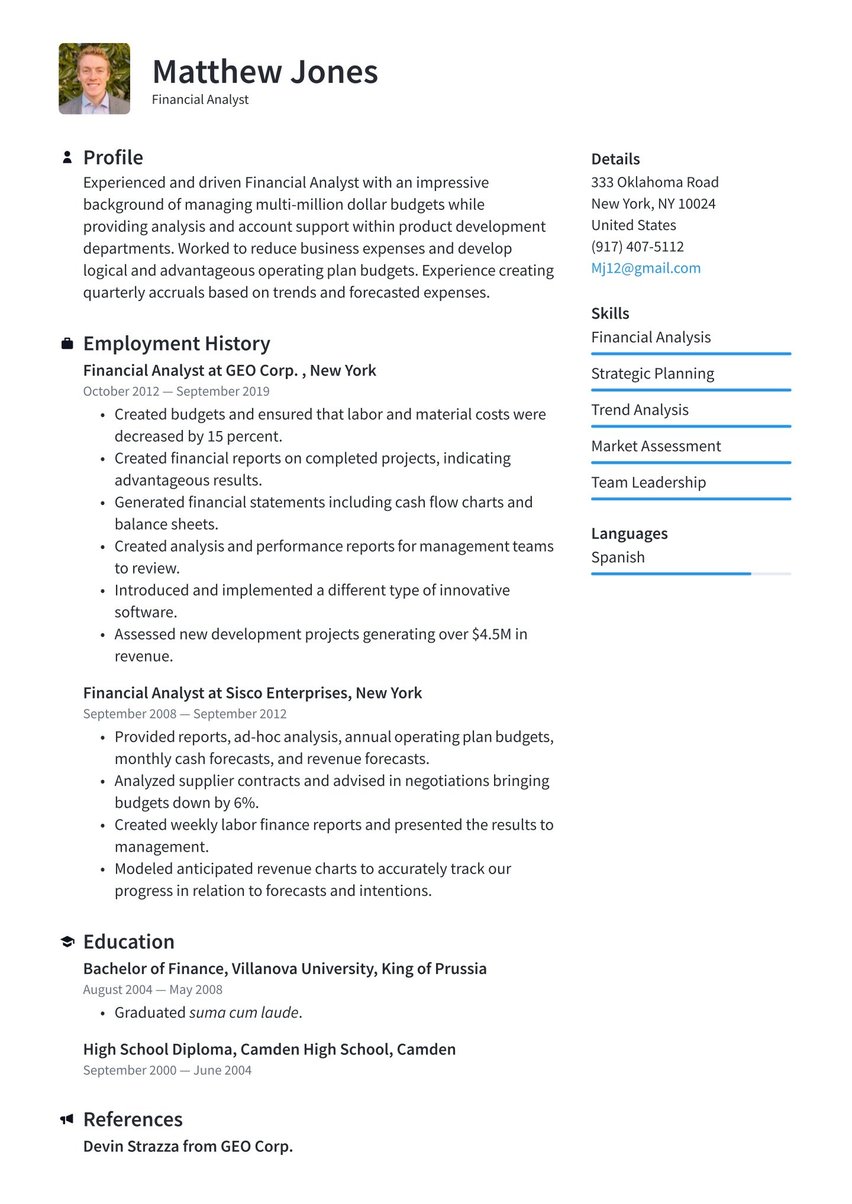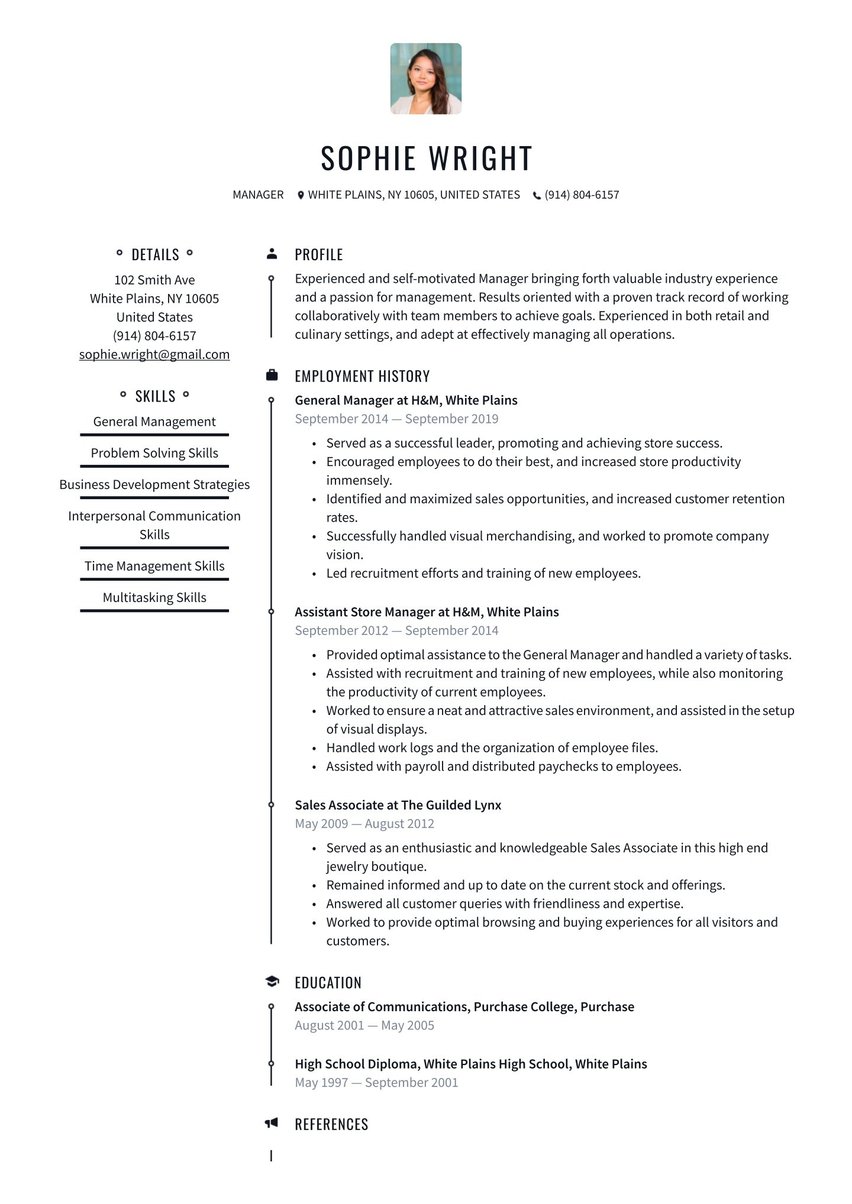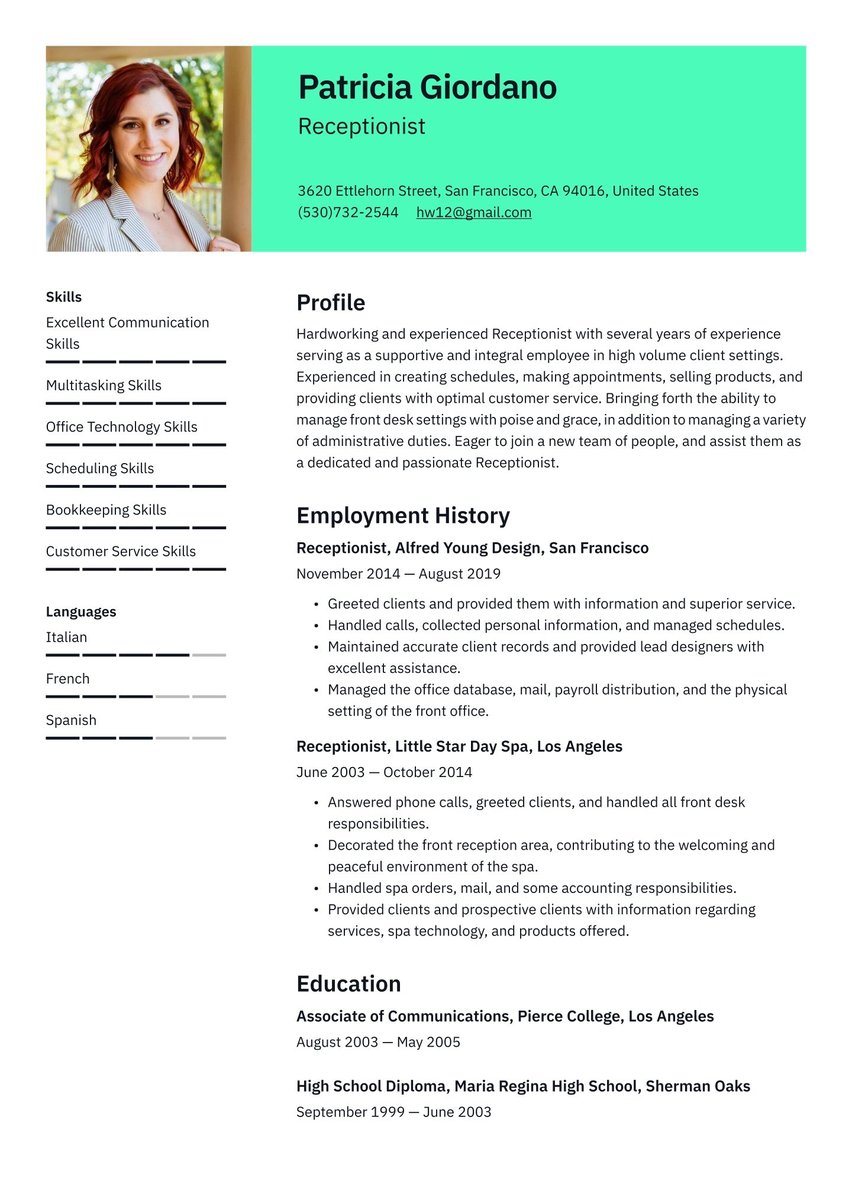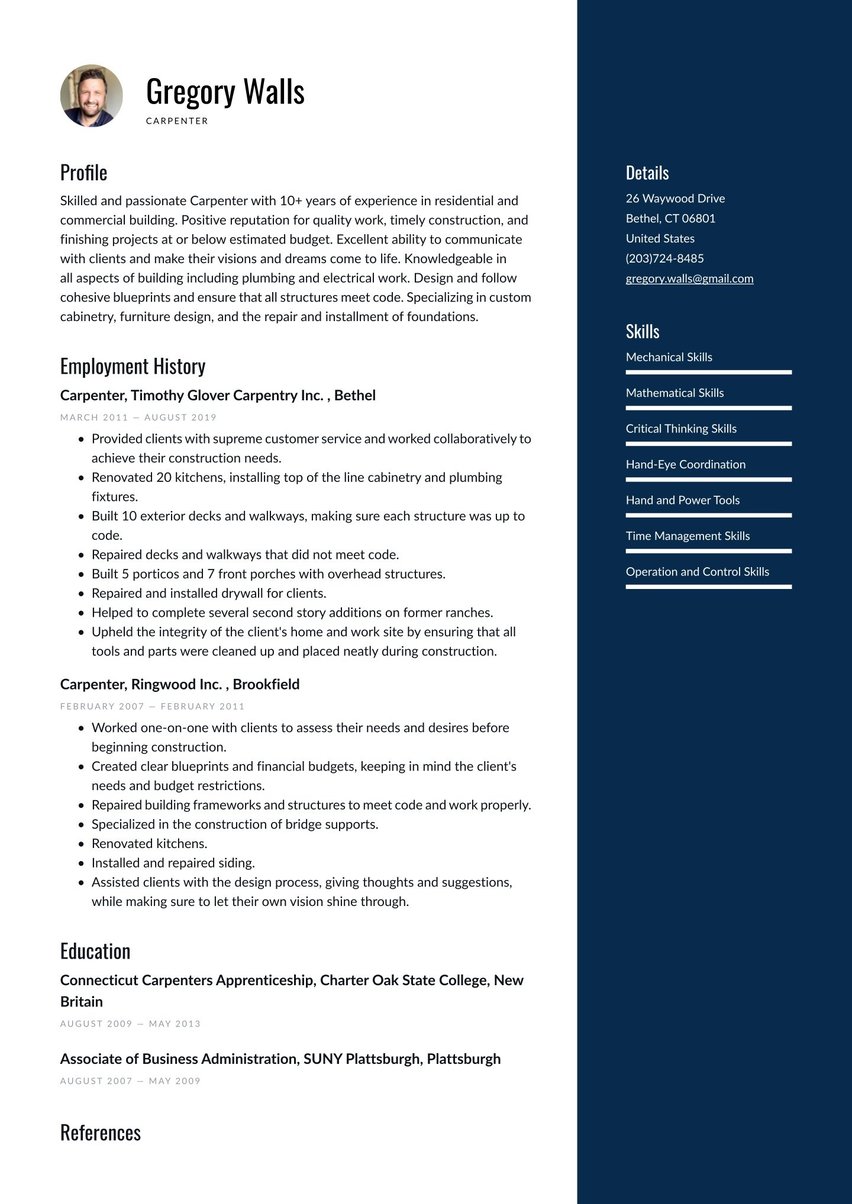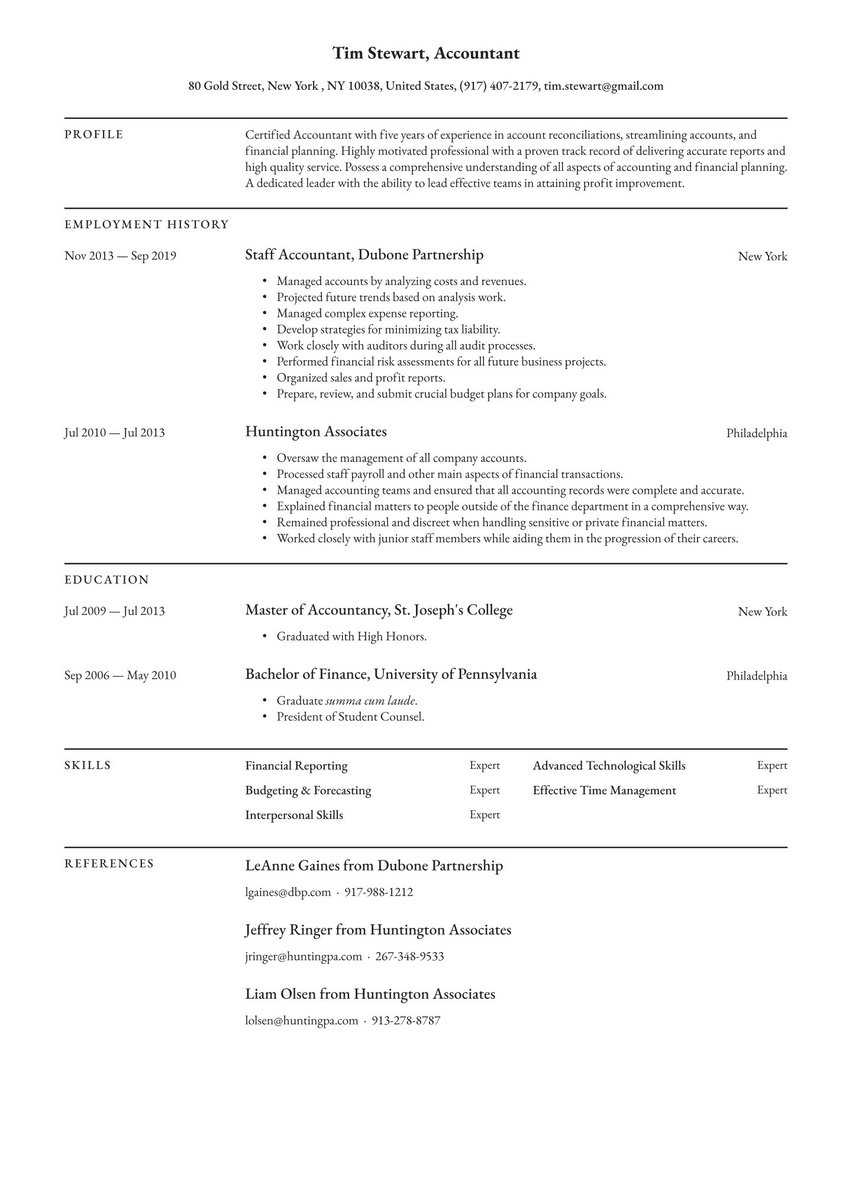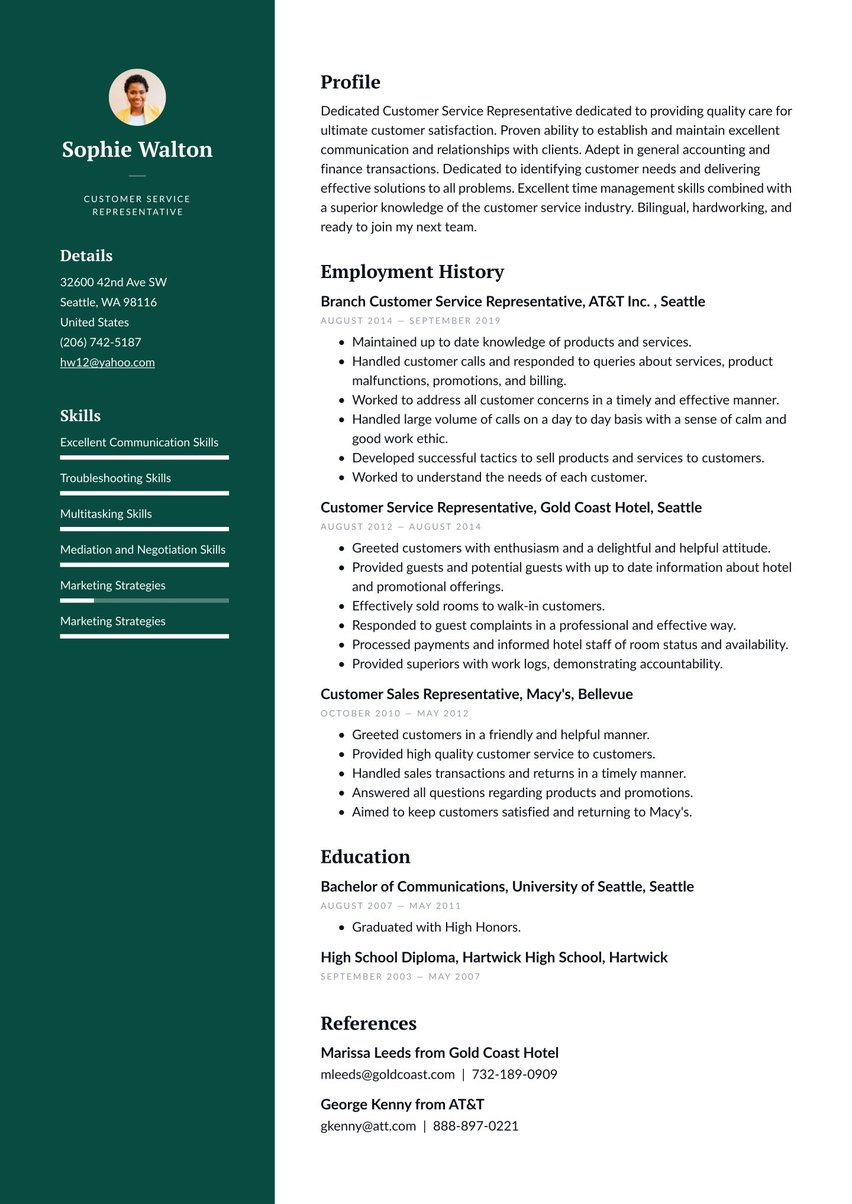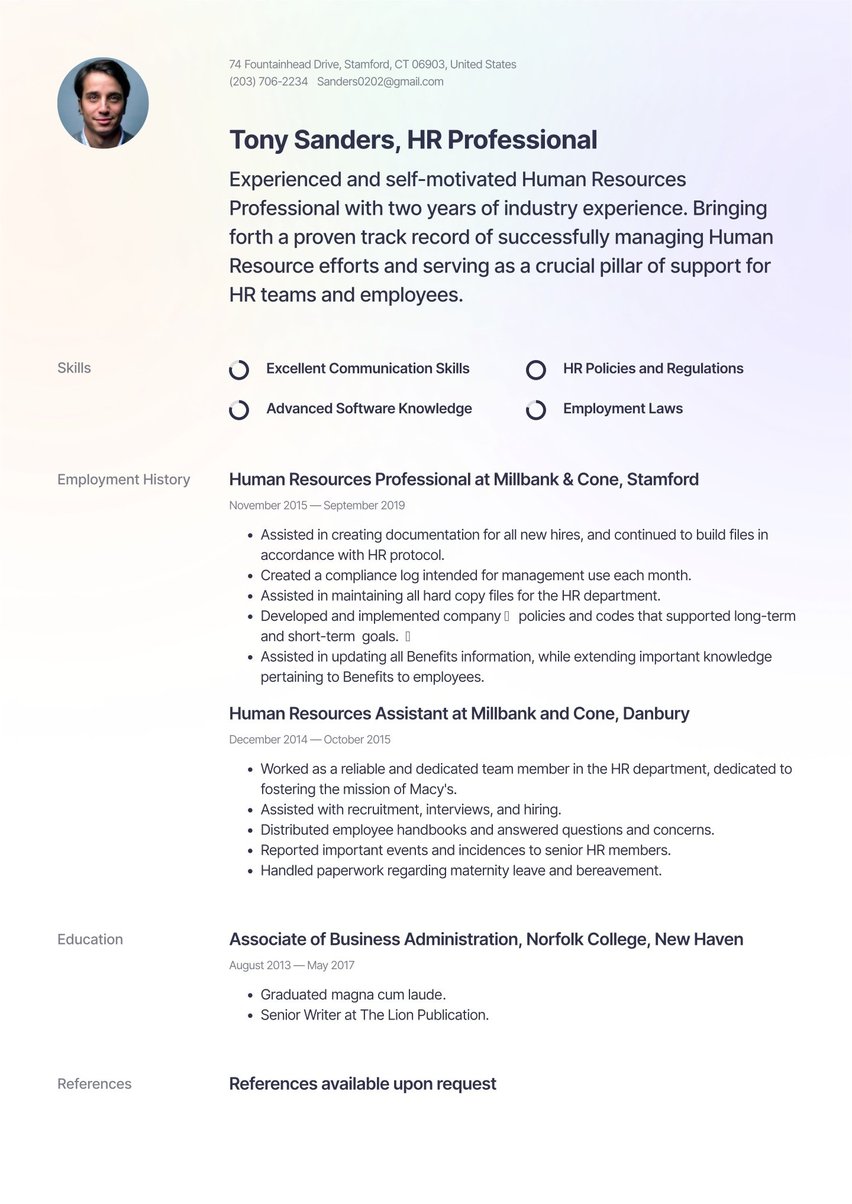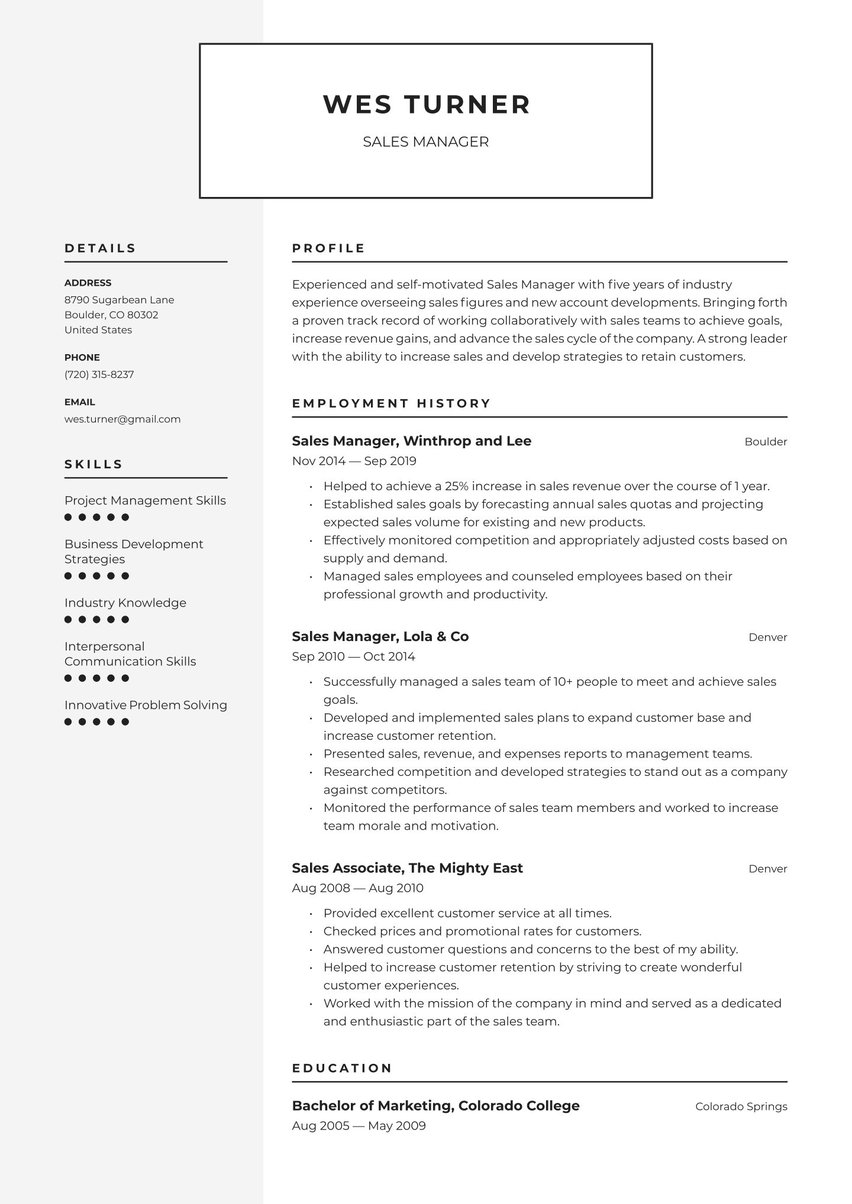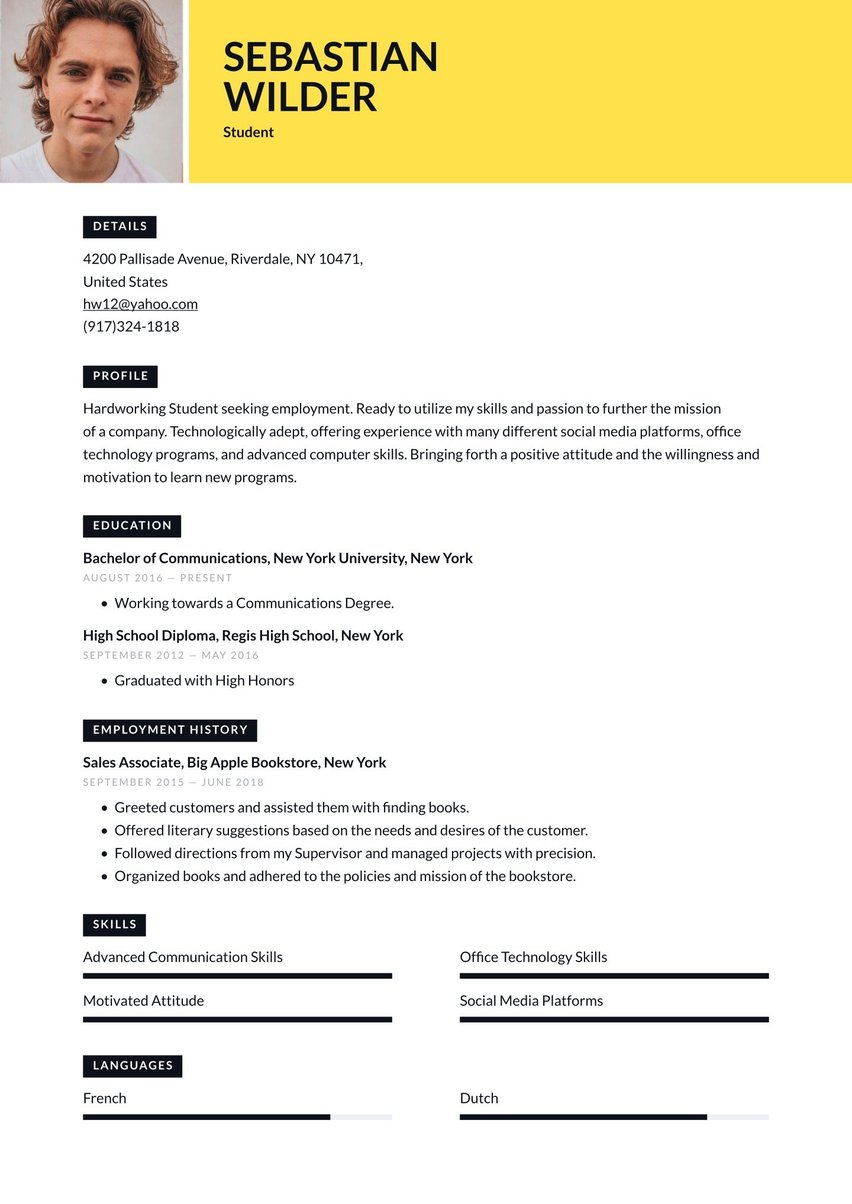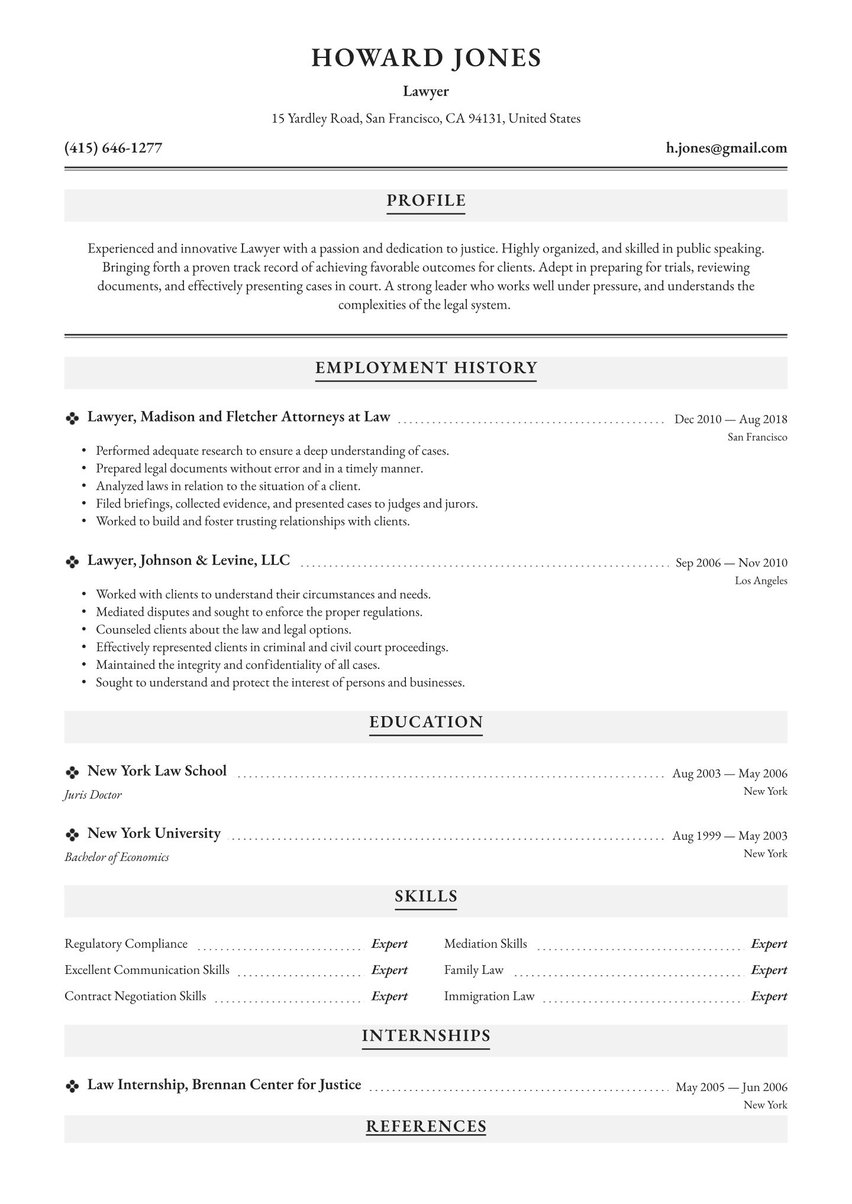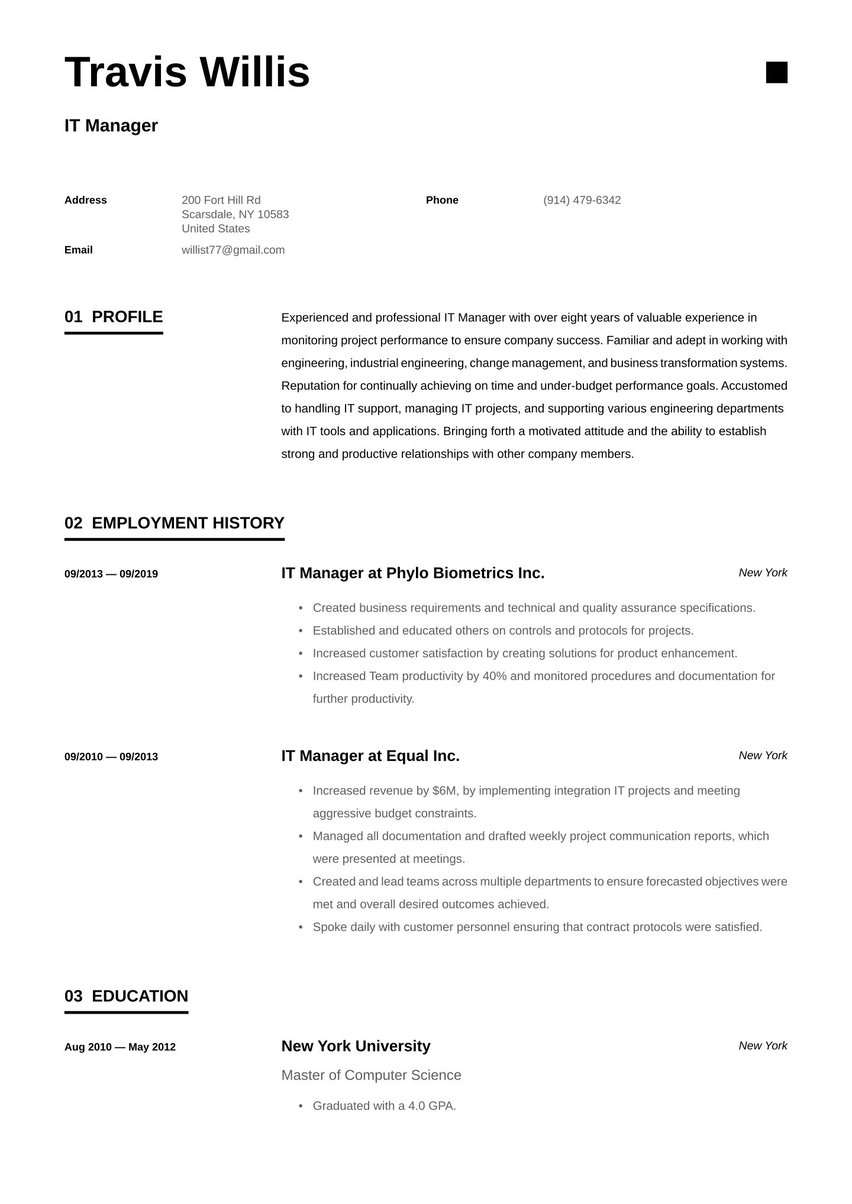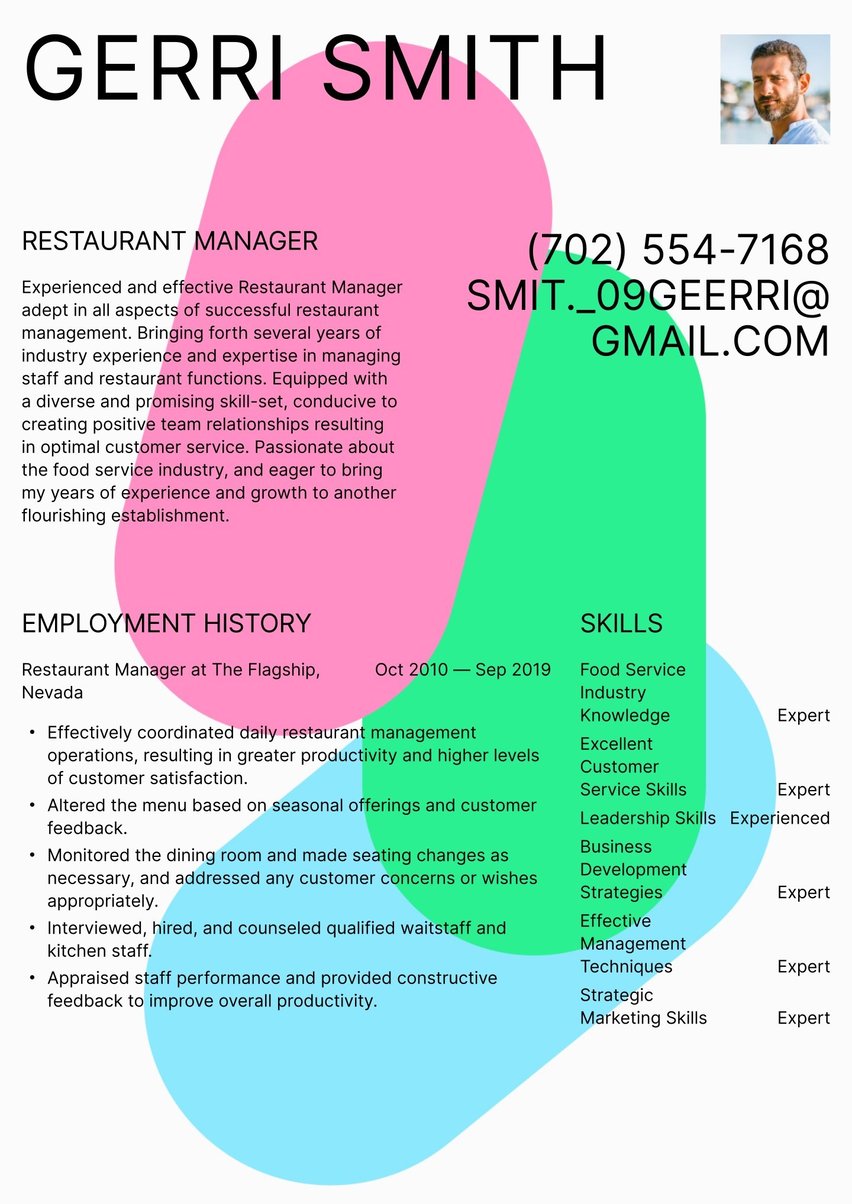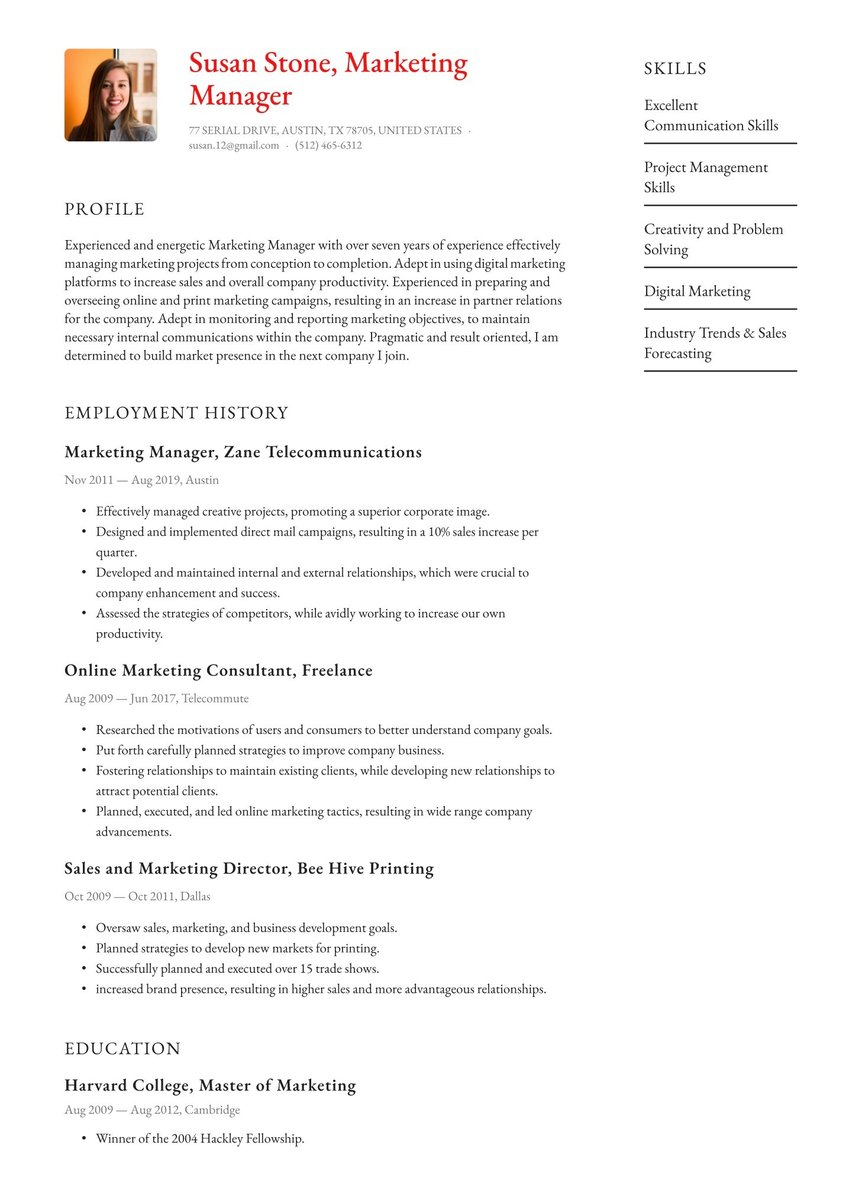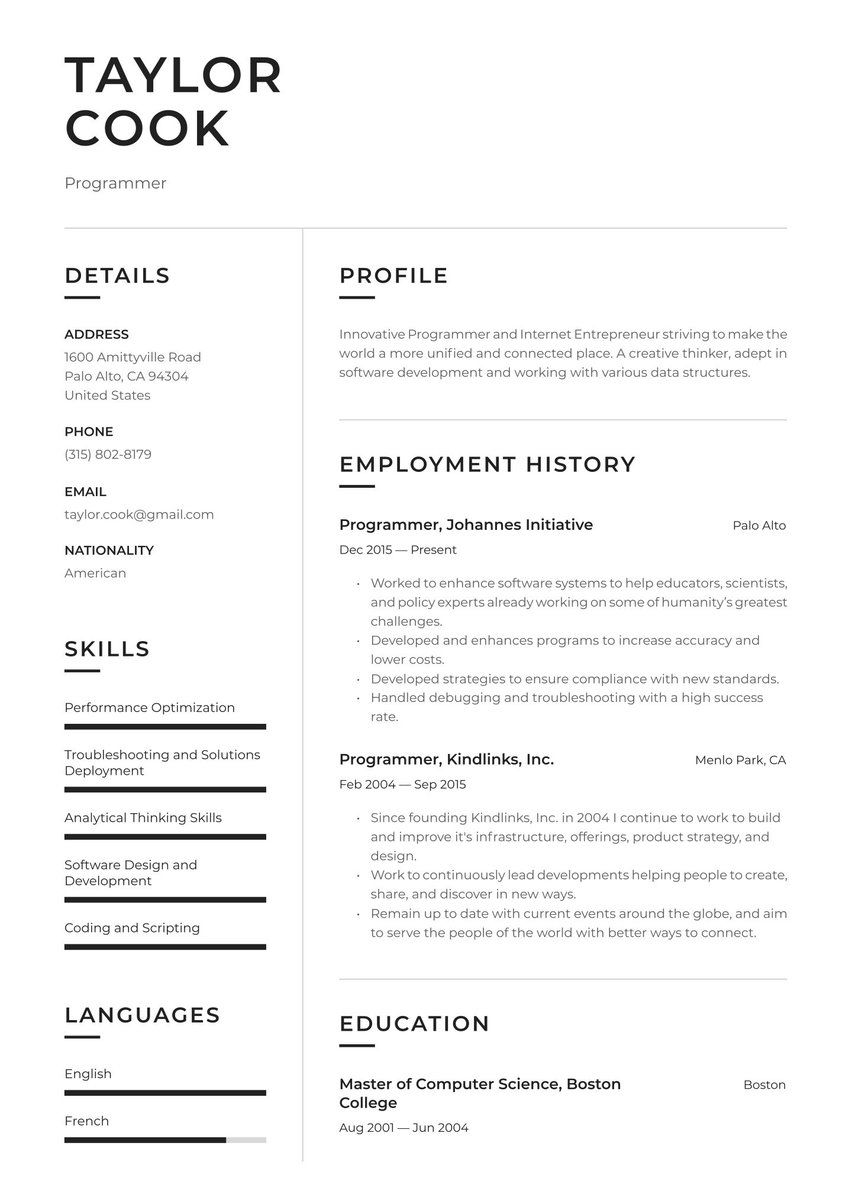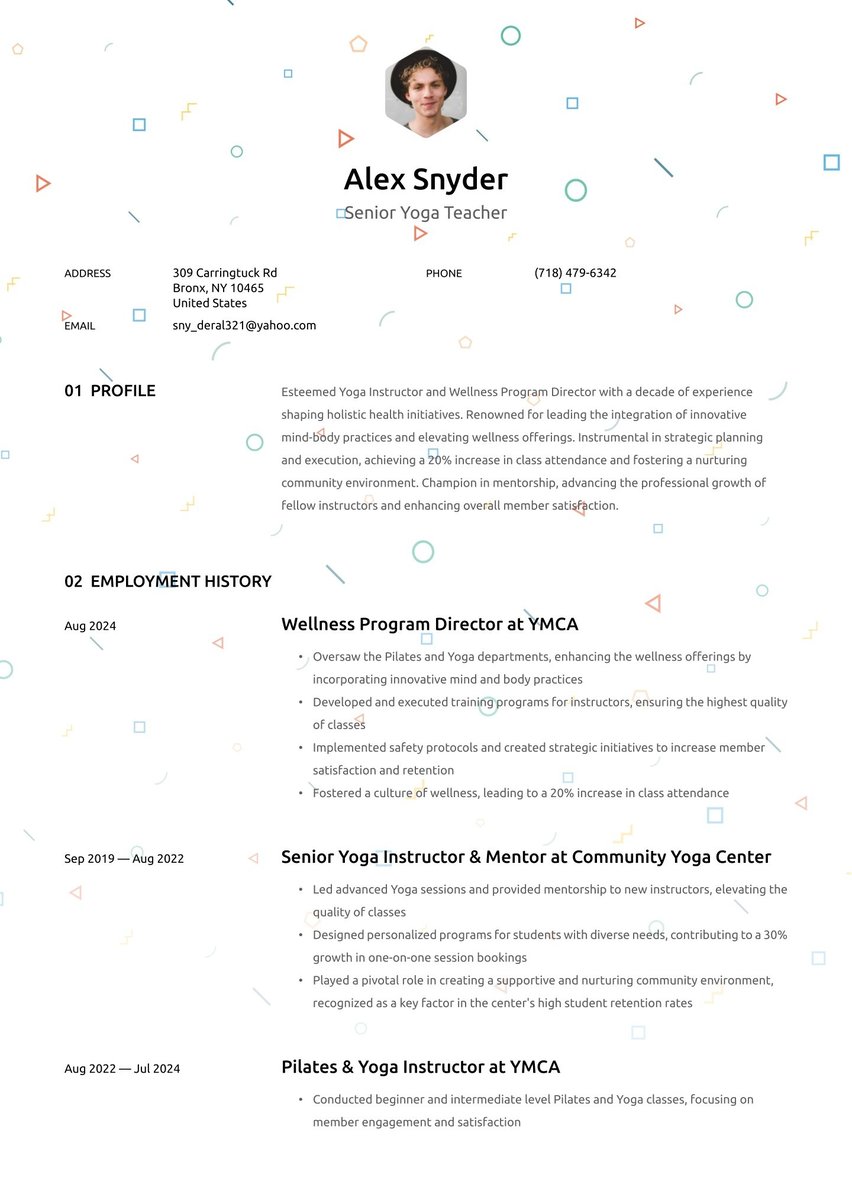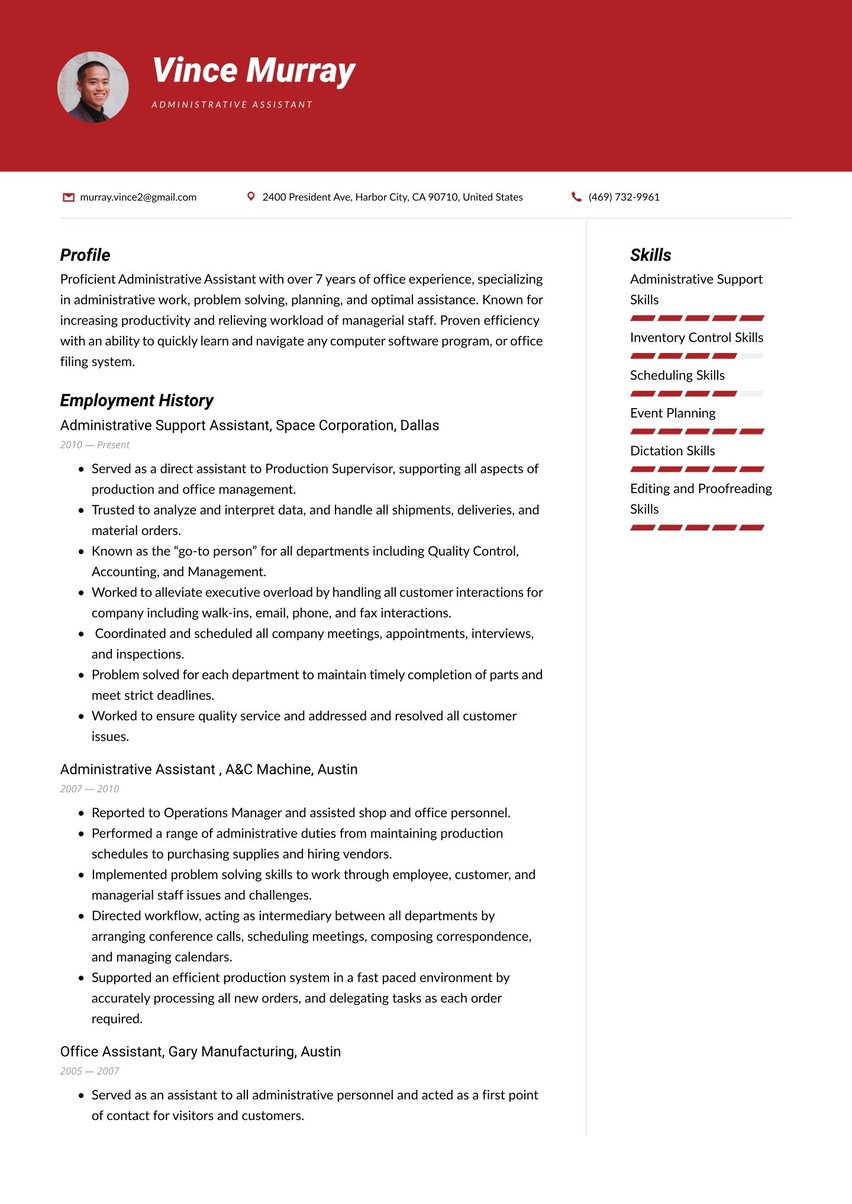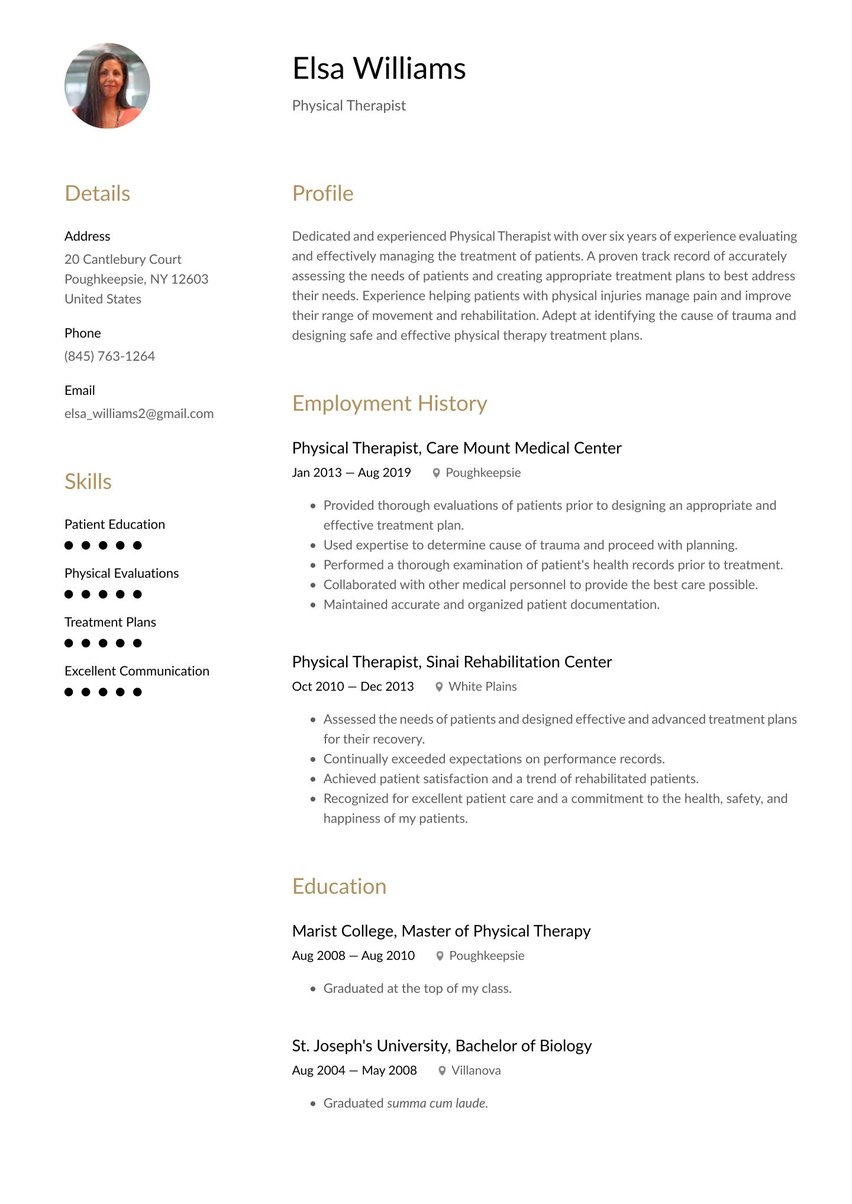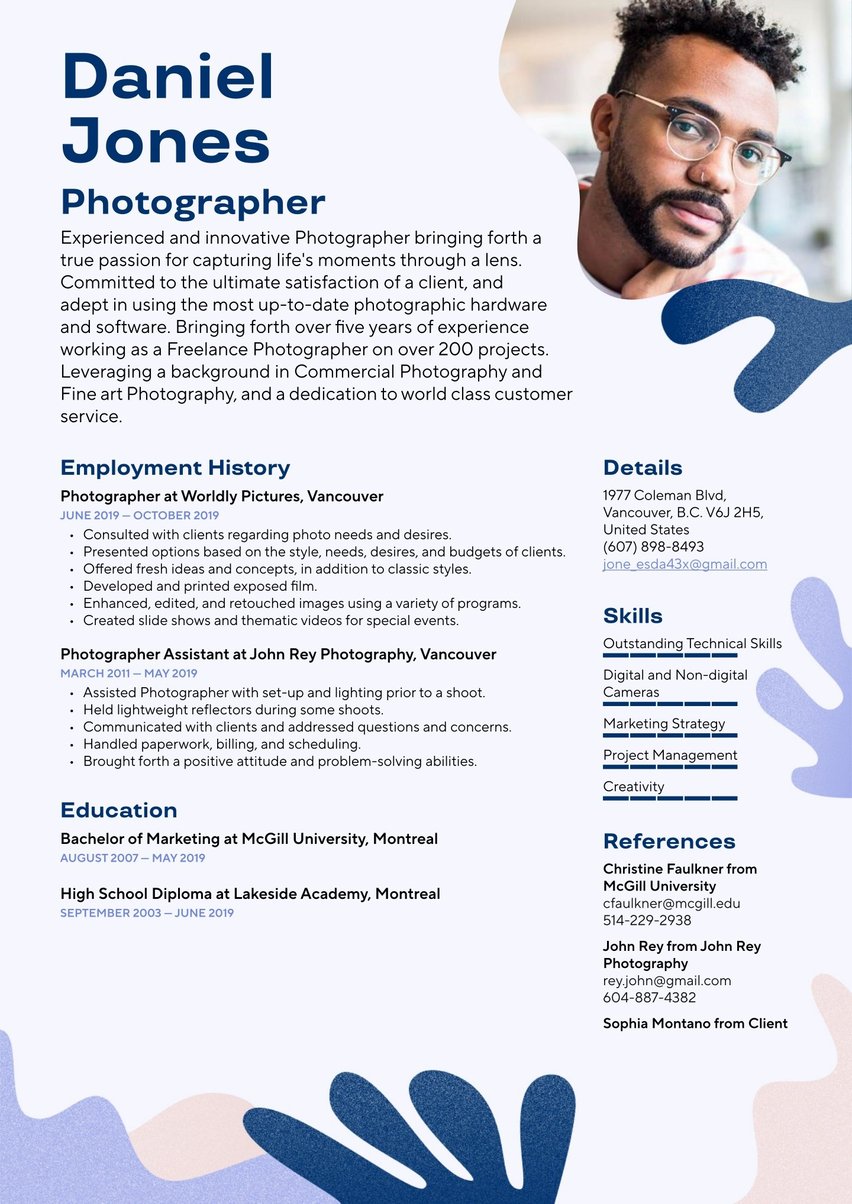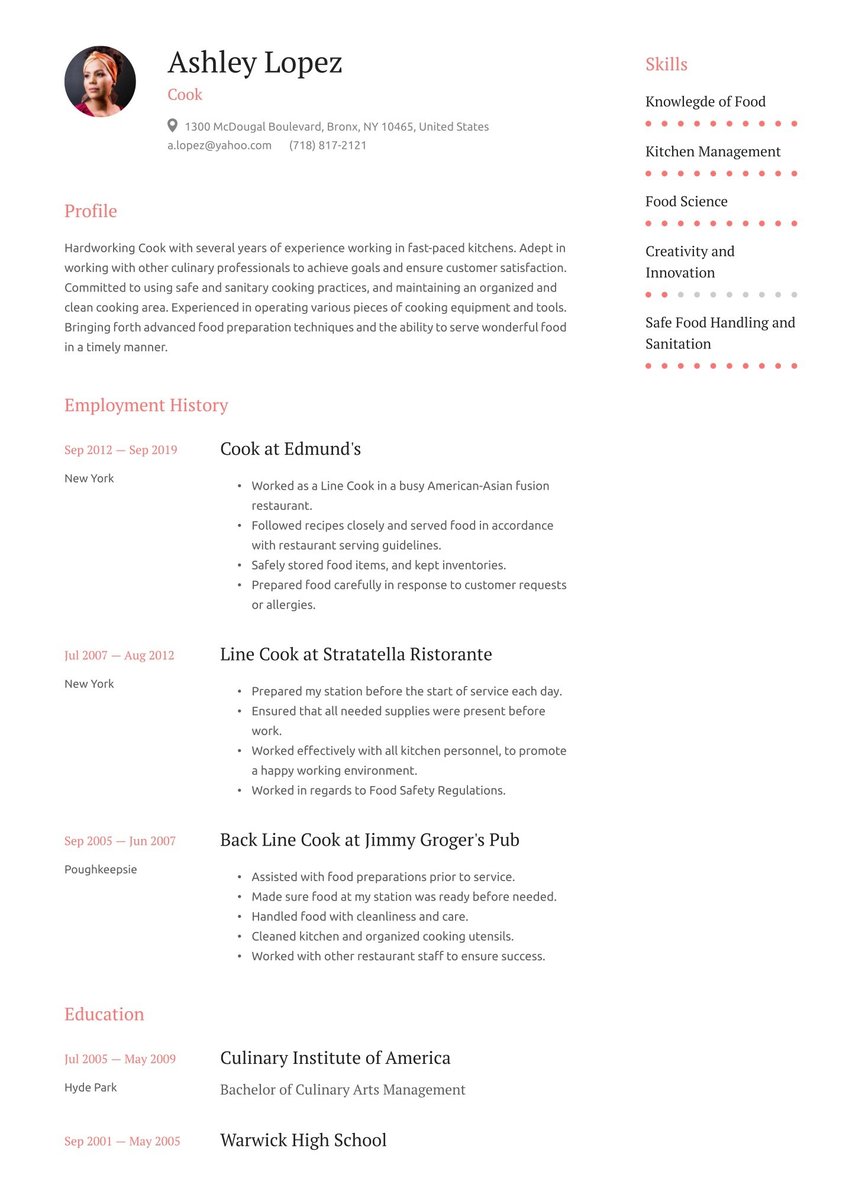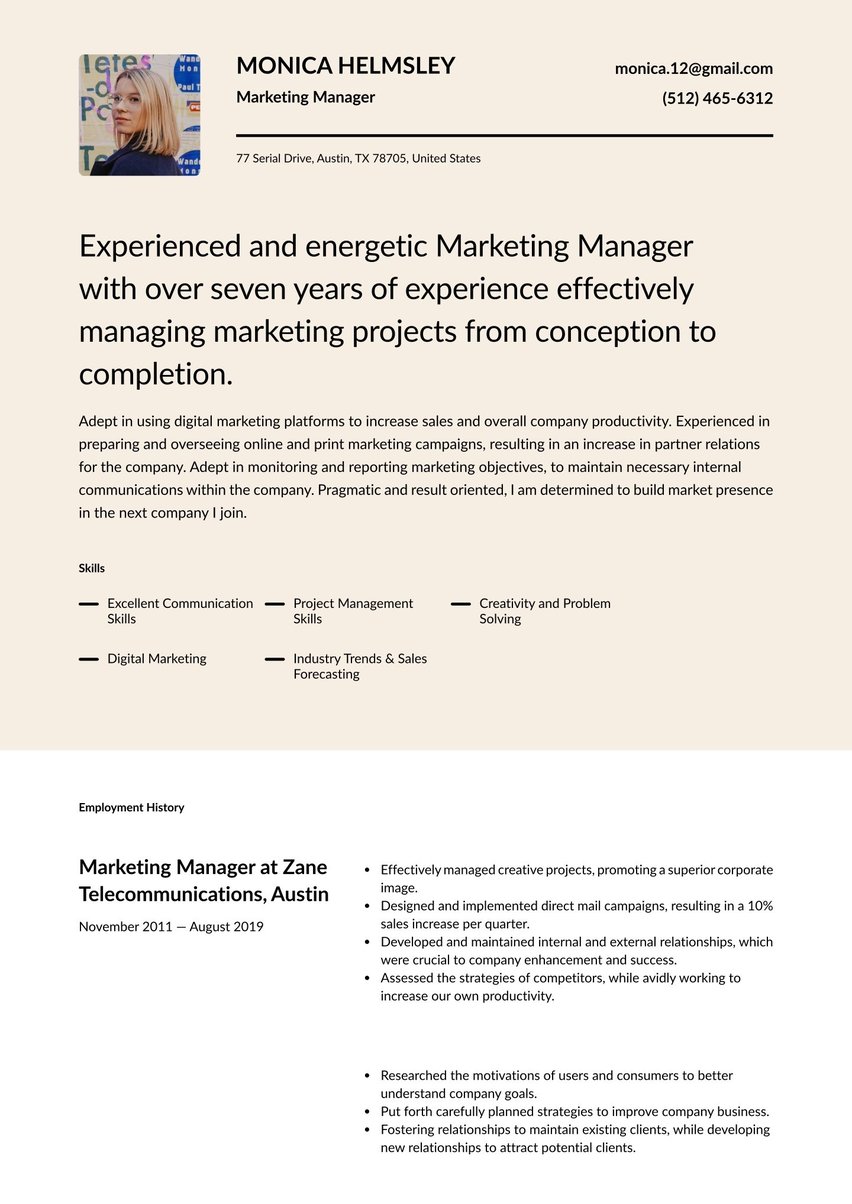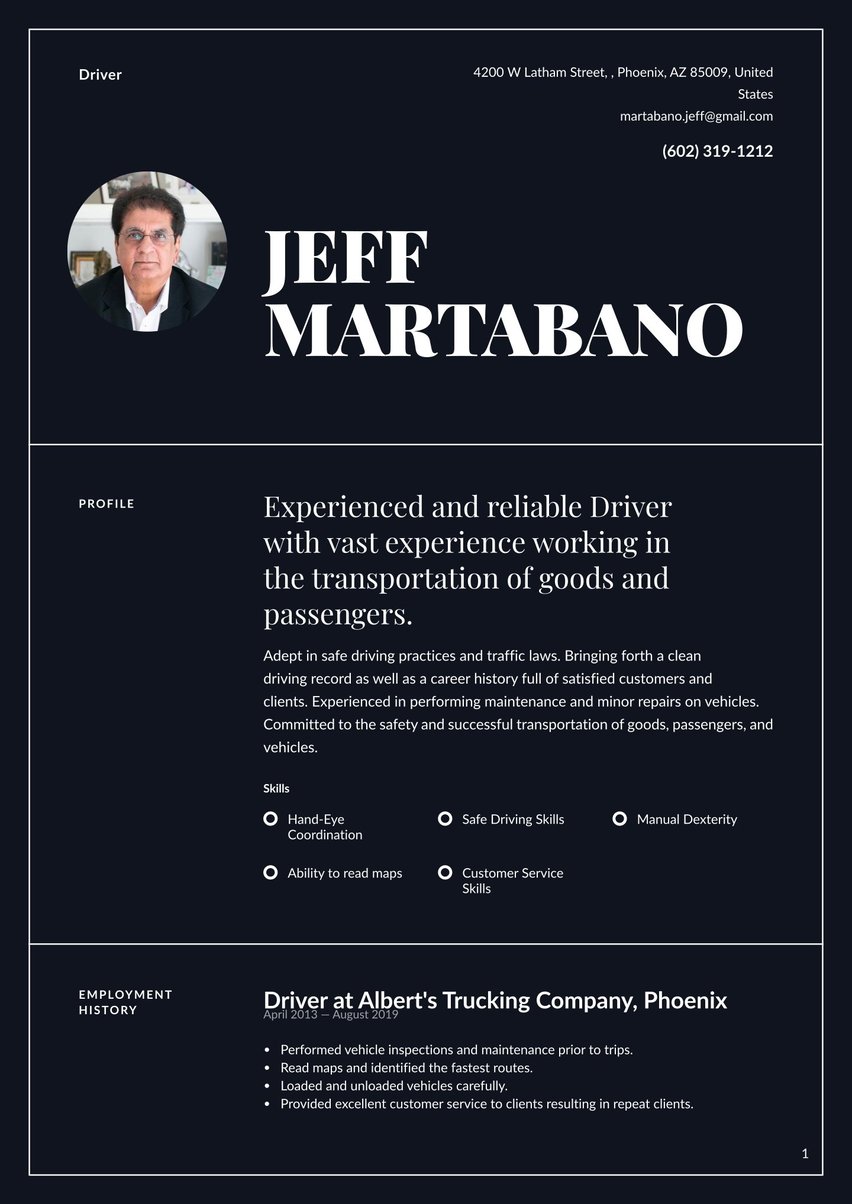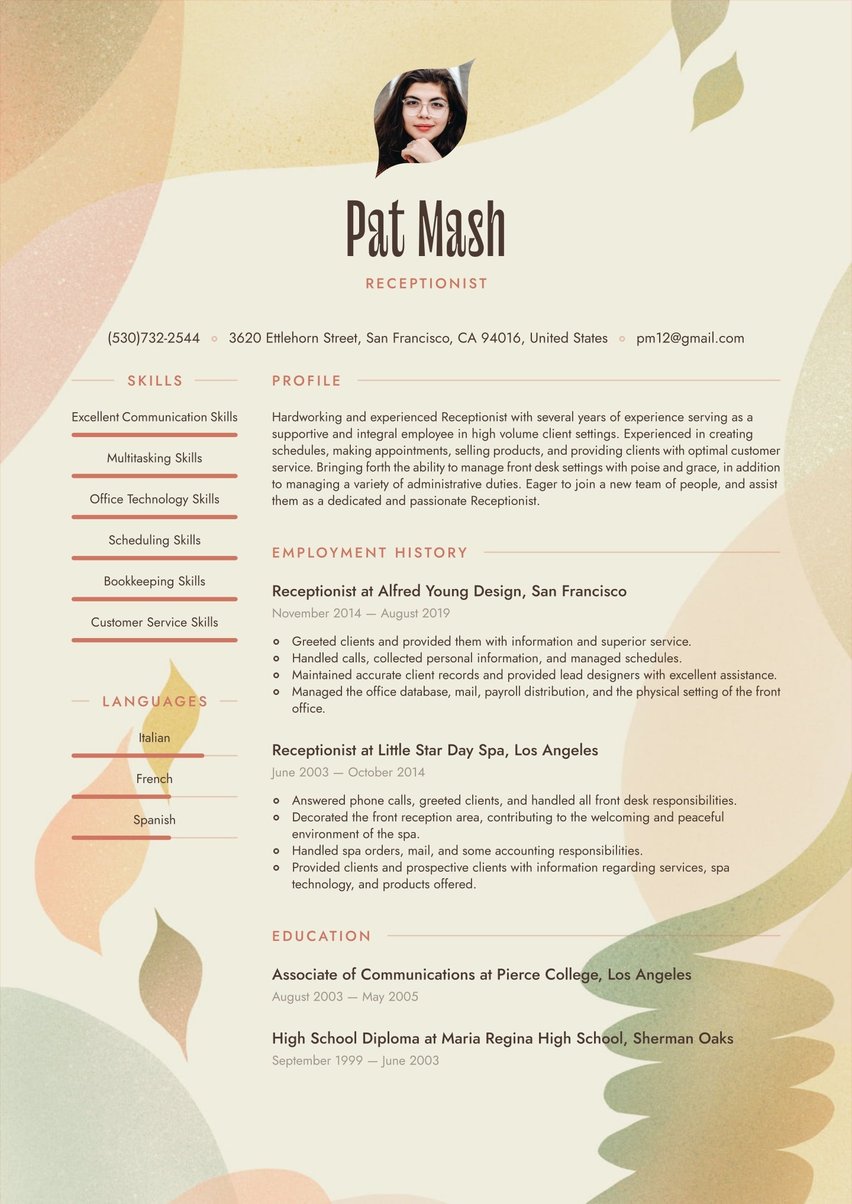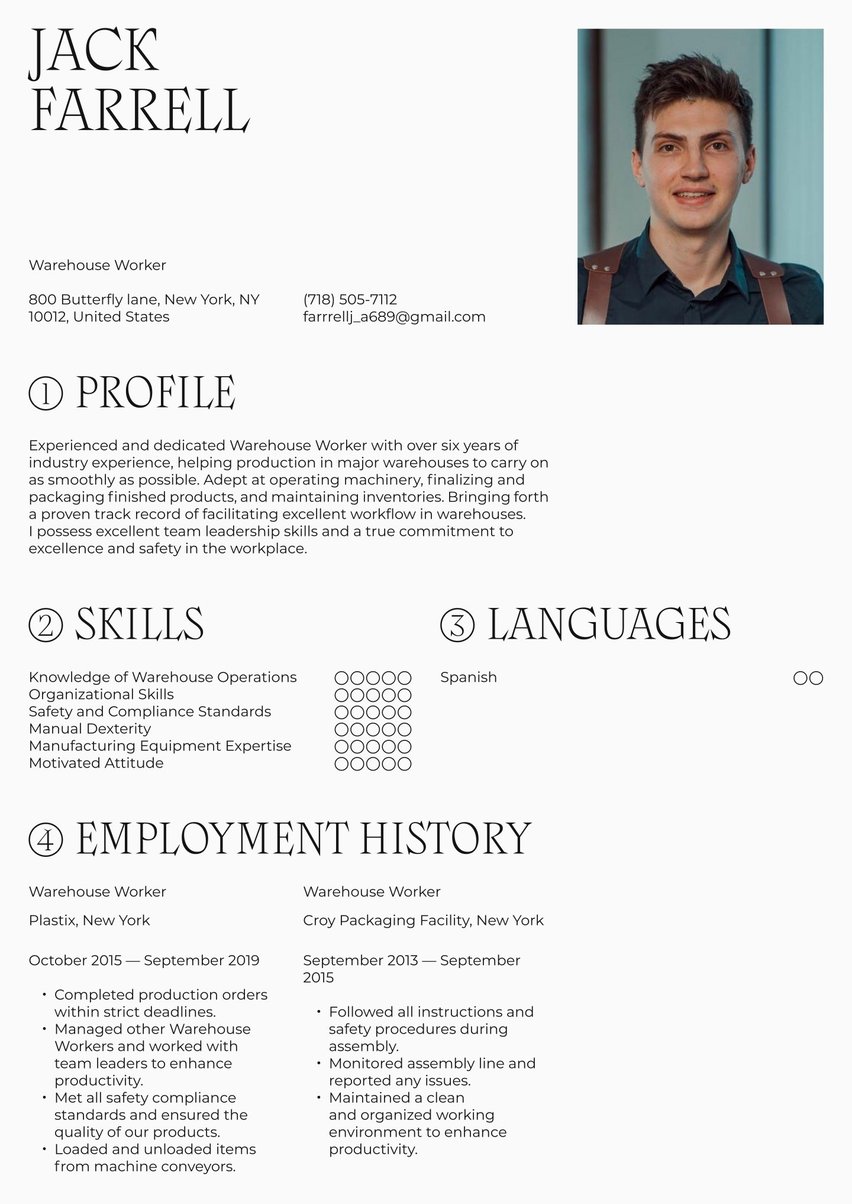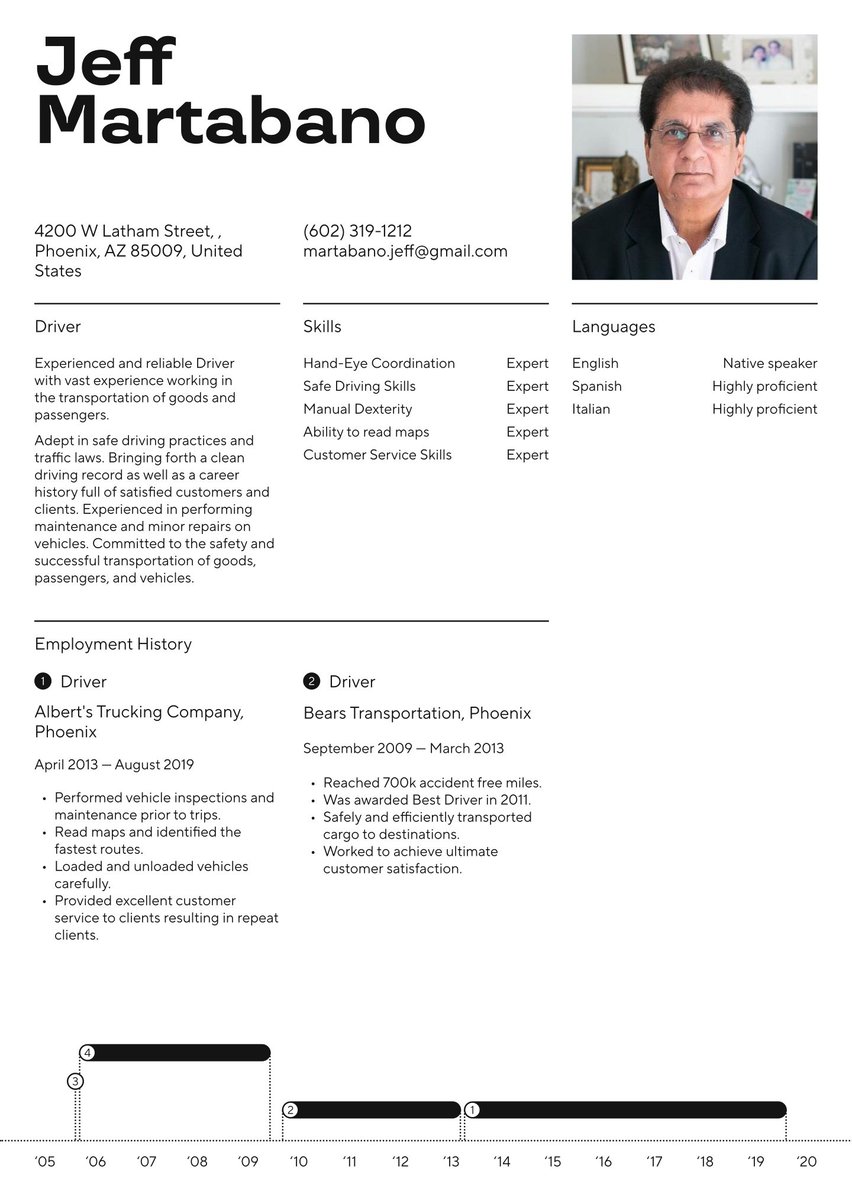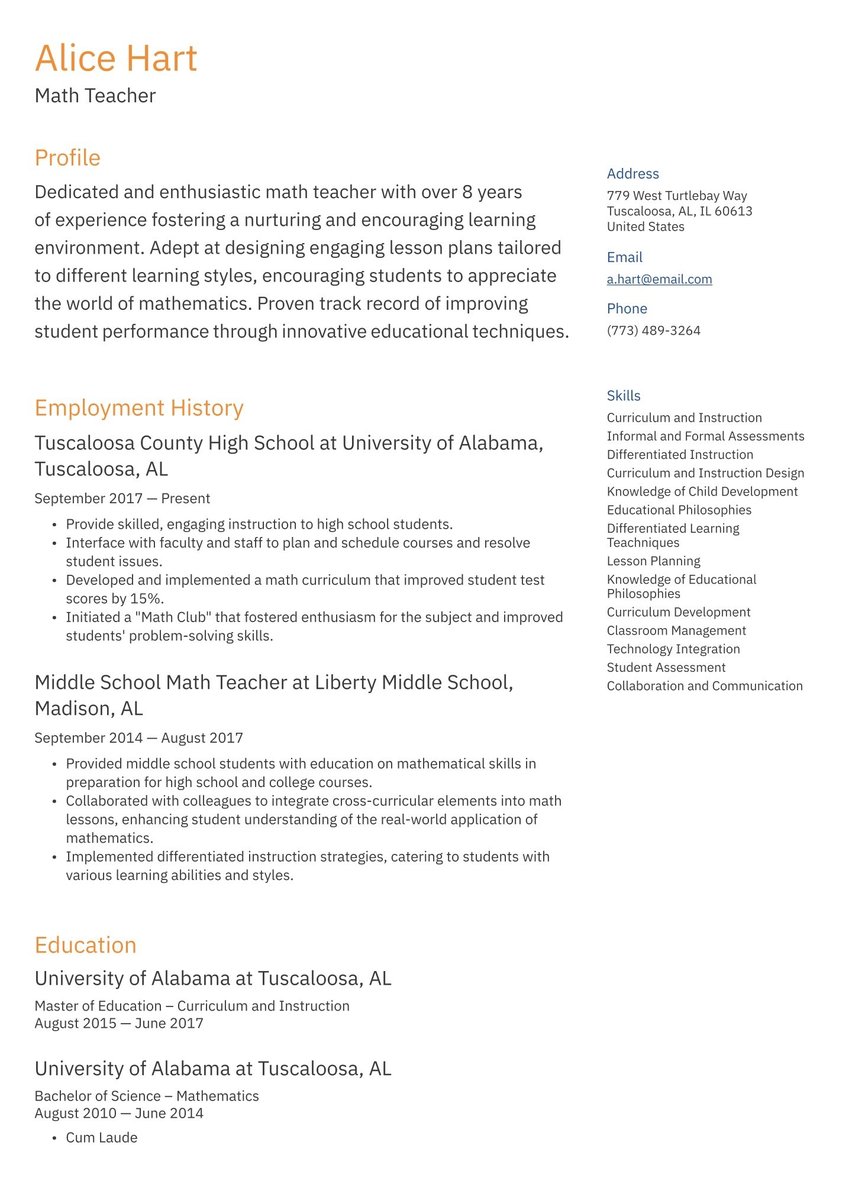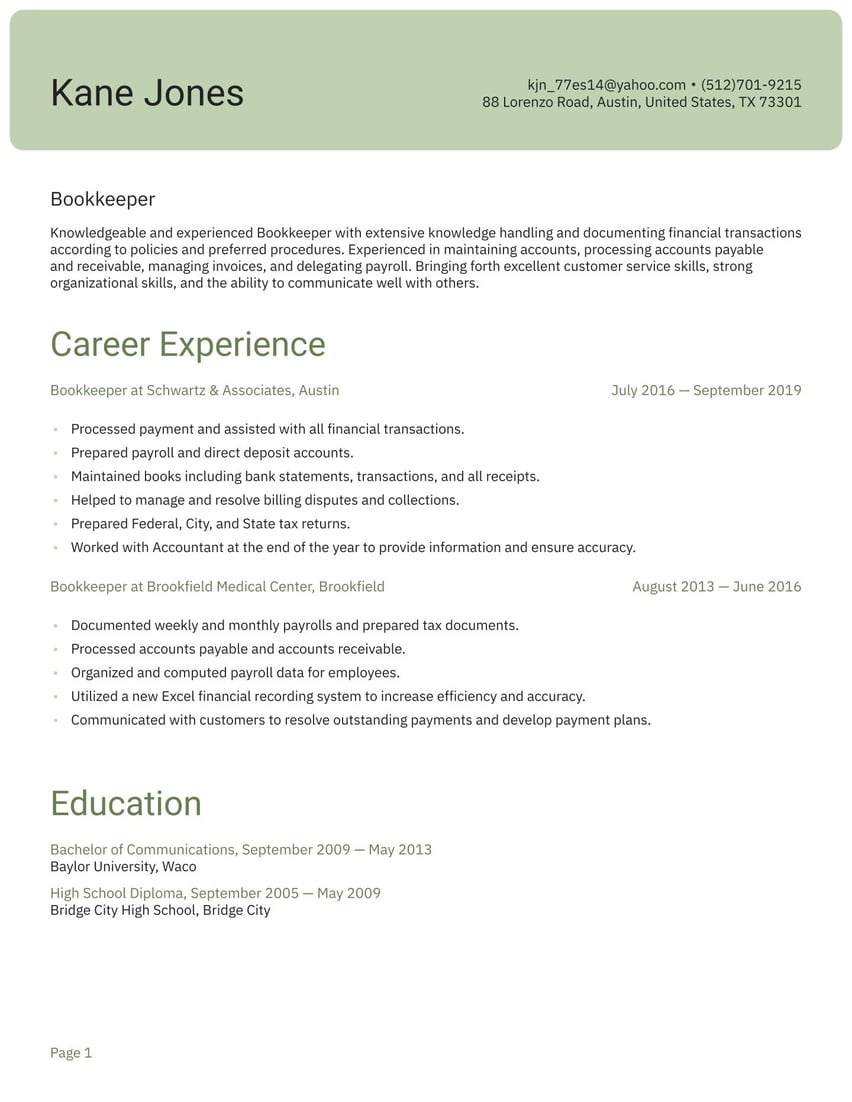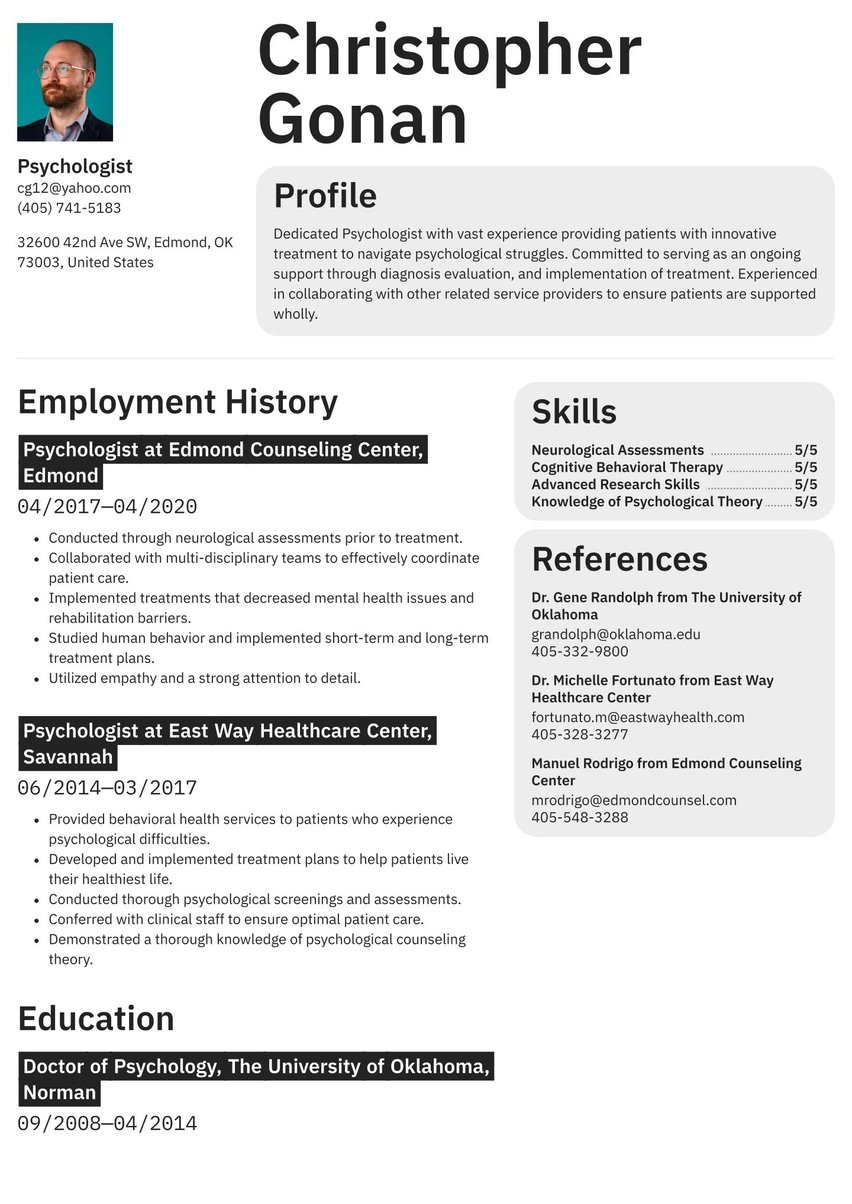If you are looking to take the next step in your career, you need a production resume that will move you right along. That’s what this guide is designed to help you achieve.
Production resume examples by experience level
Resume.io is a powerful resource for job seekers, with writing guides and resume examples for 300+ professions, backed up by an easy-to-use resume builder. Let us help you confidently express yourself and impress employers with a production resume that takes you straight off the line and into your next job.
This resume guide, along with the corresponding production resume example, will give you a plan that explains:
- What a production professional does
- How to write a product professional resume (tips and tricks)
- The best format for a product professional resume
- Advice on each section of your resume (summary, work history, education, skills)
- Professional resume layout and design hints.
What does a production professional do?
Production professionals are at the core of the manufacturing industry. They operate heavy machinery such as forklifts, assemble pieces on a production line and monitor products as they move through the line to uphold high quality.
Other production professionals handle materials or manage the entire production process. They may work in factories or shipping facilities.
Production professionals need to have an eye on safety at all times and be adept at math and reasoning. They often work in loud environments and must be on their feet for hours at a time. They may also work outdoors in all kinds of weather depending on what they are producing. Some production workers specialize in using a specific material such as glass or plastic. Metal workers may be welders, solderers, or cutters.
Operating heavy machinery is one thing, but writing a stellar cv is another. Need help? Feel free to look at our other resume samples from the same industry:
- Production Worker resume sample
- Manufacturing Technician resume sample
- Material Handler resume sample
- Machine Operator resume sample
- Operations Manager resume sample
- Forklift Operator resume sample
- Machinist resume sample
- Assembler resume sample
- Quality Assurance resume sample
- Factory Worker resume sample
Production professional job market and outlook
The job outlook for production professionals depends on their specialty. With the continued move toward automation, some may find they need retraining to stay in this profession, while other specialties will see growth.
| Specialty | Ten-year growth | Median salary |
|---|---|---|
| Assemblers and fabricators | -5% | $34,970 |
| Dental, medical and ophthalmic technicians | 12% | $38,620 |
| Food and tobacco processing | 5% | $31,950 |
|
Jewelers, precious stone and metal workers |
-1% | $41,900 |
| Machinists, tool and die makers | 7% | $47,040 |
| Metal and plastic machine workers | -2% | $38,270 |
| Painting and coating workers | 7% | $38,740 |
| Power plant workers | -14% | $89,090 |
| Quality control inspectors | -12% | $40,460 |
|
Stationary engineers and boiler operators |
6% | $68,680 |
| Water and wastewater treatment | -3% | $49,090 |
| Welders, cutters, solderers, brazers | 8% | $44,190 |
| First line supervisors | No data available | $62,850 |
Data from the U.S. Bureau of Labor Statistics
Overall, the manufacturing sector is predicted to grow only 3.5%, according to Deloitte and will not reach pre-pandemic levels in 2021.
How to write a production professional resume
When you work in production, you follow a plan for assembling components. The same is true of your production resume. Here are the sections your CV should include:
- The resume header
- The resume summary (aka profile or personal statement)
- The employment history section
- The resume skills section
- The education section
Each product requires different specs; each job is different; therefore, each of your resumes should be customized. The best way to do this is with a little digging. Find out what you can about the company, its manufacturing goals and the processes it uses. Then, apply that knowledge to your production resume. This step will help you deliver the message the hiring manager is looking for.
A thoughtful production professional resume:
- Keeps your future employer’s needs in mind and communicates directly to that company
- Makes a winning first impression with a clean, professional design and template that represents your style visually
- Is optimized with keywords and phrases that will help you overcome the Applicant Tracking System (ATS) hurdle.
Beating the ATS
ATS software scans and ranks resumes according to algorithms. Employers tag keywords and phrases to the job listing so that they can be sure candidates have the skills they need. Before a human being ever has a chance of seeing the resume you worked so hard on, a software algorithm is judging whether your document should get a second look.
Carefully read the job description and take careful note of the skills and attributes within. Try to use the exact words or phrases (if they are applicable) in your resume to cue the ATS that you have what your prospective employer is looking for.
Choosing the best resume format for production jobs
Your best bet is a resume that uses the reverse chronological order format within your employment history section. In this format, you begin with your most recent position and work your way backward until you’ve included at least 3 jobs or up to 10 years of work history.
Unless you have highly specialized production skills or work in a highly technical field, the functional resume format, which de-emphasizes the employment history section, should not be your first choice. It offers a means to emphasize niche or highly complex skills by expanding the skills section and reducing the employment history section in exchange.
Resume summary example: quality assured
The summary (also known as a profile) of your production resume is your chance to add some personality to what is otherwise a formatted document. You have about 100 words to explain why you want the job and why the company should hire you.
Start with a sentence that offers an overview of your professional experience. Then add a sentence or two that illustrates your skill or greatest work achievement. Finally, wrap up with a sentence or phrase that explains why you want this particular job.
Want some more inspiration for your summary? Peruse one of our other related production resume samples. We offer a quality assurance resume example, a production worker or factory worker resume sample, as well as an operations manager resume sample.
You can find a resume example for your summary section below.
Dynamic and motivated Supply Chain Manager adept in ensuring the existences and replenishment of company resources consisting of products, services, and supplies. Committed to empowering team members and increasing the quality of materials and services provided.
Employment history sample: build your career story
Within the employment history section of your production resume, you will be detailing your work successes. As we said above, start out with your most recent position. Add the job title, employer name, dates worked and location. No need to go back further than 10 years – that technology is likely obsolete anyway.
Underneath each job title, you’ll want to include 4-5 bullet points. Start each bullet item with a strong action word and follow with one of your achievements. Be as detailed as you can when you list any machinery you have worked with.
Try the STAR format for organizing this section. Relate the Situation, explain your Task, tell what Action you took and detail your Results.
Below you will find an adaptable employment history resume sample.
- Pushed for process improvements that directly improved material flow throughout the company.
- Worked to achieve monthly inventory targets.
- Investigated in-depth supplier capabilities to achieve optimal manufacturing processes.
- Work closely with suppliers to ensure best practices and procedures,
CV skills example: line up your abilities
The skills section of your production CV allows recruiters to see at-a-glance whether you have the attributes they need. It also lets you tell them what you think is most important. Review the job listing one more time and make sure you optimize your CV to get past the ATS by swapping in skills that are mentioned there.
Think more broadly than your technical skills as you compile this section. You need physical stamina, problem-solving abilities and flexibility as tools and production methods change. Create a CV skills section that touches on all these different aspects of your job.
Below you will find a skills section resume example.
- Ability to Work in a Team
- Communication Skills
- Technical Design
- Effective Time Management
- Critical Thinking Skills
- Web Applications and Web Technologies
Production professional education resume example
Many production professionals learn on the job, so you can simply list your high school experience, GED or any other level of education you have achieved in your education section. If you have earned any certifications or taken any training seminars related to your specialty, list those here as well.
Below you will find an education section resume example as a formatting guide.
- Bachelor of Science in Computer Science, St. Joseph's University, Philadelphia
- Sep, 2010 - May, 2014
Resume layout and design: keep the lines clean
Your production resume layout and design send a message about who you are before the hiring manager ever reads a word on the page, so it’s worth putting in the effort to come across as detail-oriented and professional.
Here are some resume design and formatting guidelines to follow to ensure you make a great first impression:
- Use simple, easy-to-read fonts. Remember that you want to maintain readability
- Allow your contact information to stand out, but avoid a profile picture
- Create white space by varying your line lengths
- Keep your resume to one page unless you’re quite advanced in your career
- Proofread carefully to avoid an spelling, grammatical, or punctuation errors
If you’d like a hand in creating an attractive and functional resume header to make your name and contact information more visible, you may consider using a resume template. Even a simple design can help catch a hiring manager’s attention and make you stand out as a polished candidate.
Key takeaways for a production professional resume
- The market for manufacturing jobs is slowly rebounding, but the demand is uneven so retraining may be in order.
- Get the message across in your profile that you are a quality worker.
- Personalize your resume to show you truly want to work at the company and understand its needs. (It will also help you rank higher with the ATS.)
- Find more ideas for a professional layout in our production resume sample.


.jpg)

.jpg)
